2024 is the best year we've ever had for factory games
Now that I've played Shapez 2, out in early access today, I'm reveling in the variety of killer automation games available right now.
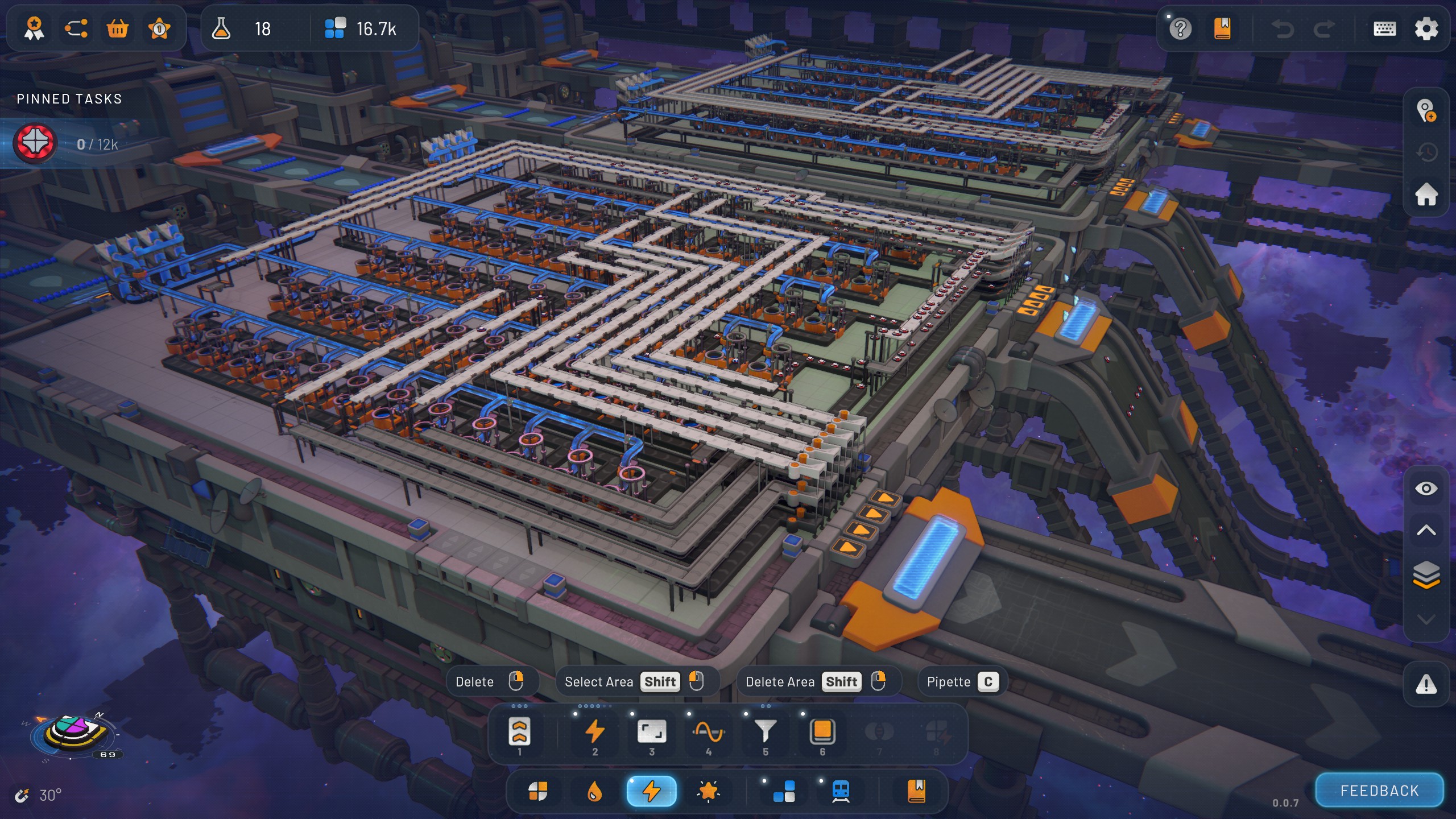
Factory friends and fellow automation lovers, this is going to be—already is—a hell of a year for the factory-building genre. I know this because not only are we going to get Satisfactory 1.0, we're getting the giant game-doubling expansion that is Factorio: Space Age. I know this because the herald of this golden year of factories has arrived today in the form of early access for Shapez 2. In the bare decade that factory-building has evolved from half-baked ideas and fringe Minecraft mods to full-fledged sims we've seen some great games, but the future is looking ever-brighter.
Shapez 2 is such a good example of how many more ideas are still lurking in this genre. It's so different from the two other big-name factory games releasing this year (it's also different from Foundry, yet another option released four months ago). Where Factorio and Satisfactory embrace the survival genre and the idea of limited resources as a game constraint—something to give you that delicious friction and tension as you play—Shapez focuses instead on the inherent puzzle of arranging and connecting the machines that make up your factory. You can build practically as many machines, platforms, and as much work space as you want because the focus is instead on how your factory's products take shape.
In a game like Factorio you send an iron plate into a machine and get out a perfectly shaped iron gear. Simple as. In Shapez you pull a square out of the ground but the product you need is a half-green square that has a half-square stacked on top. That means you'll need to lay down machines for each step in the process: Cut the squares in half with one machine, paint about a third of them by bringing in liquid paint with another, a third machine to rotate the the sliced-up halves into the correct orientation for a final series of machines to then stack them into a half-green square with a half-square on top.
That's a very simple example of what Shapez 2 has in store. Processing quickly requires more elaborate machine chains, and the raw shapes you get aren't always so simple as a basic square. You'll cut, separate, cut again, recombine, mix colors, stack, raise with supports, stack again, and backfill raised sections with liquid crystal—and some of those results have to be done in order. Crystal sections, for example, shatter if dropped or cut by a later process.
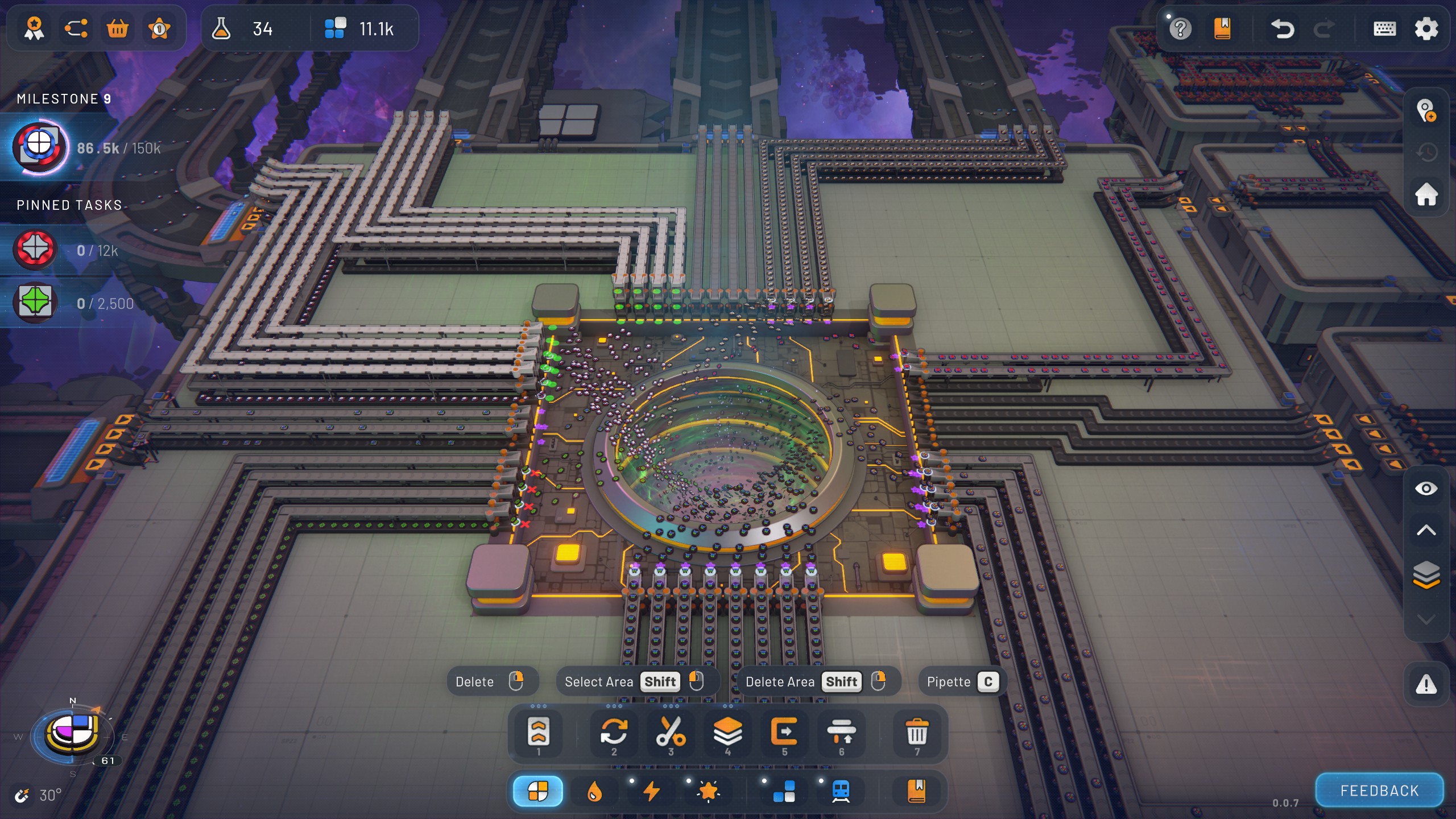
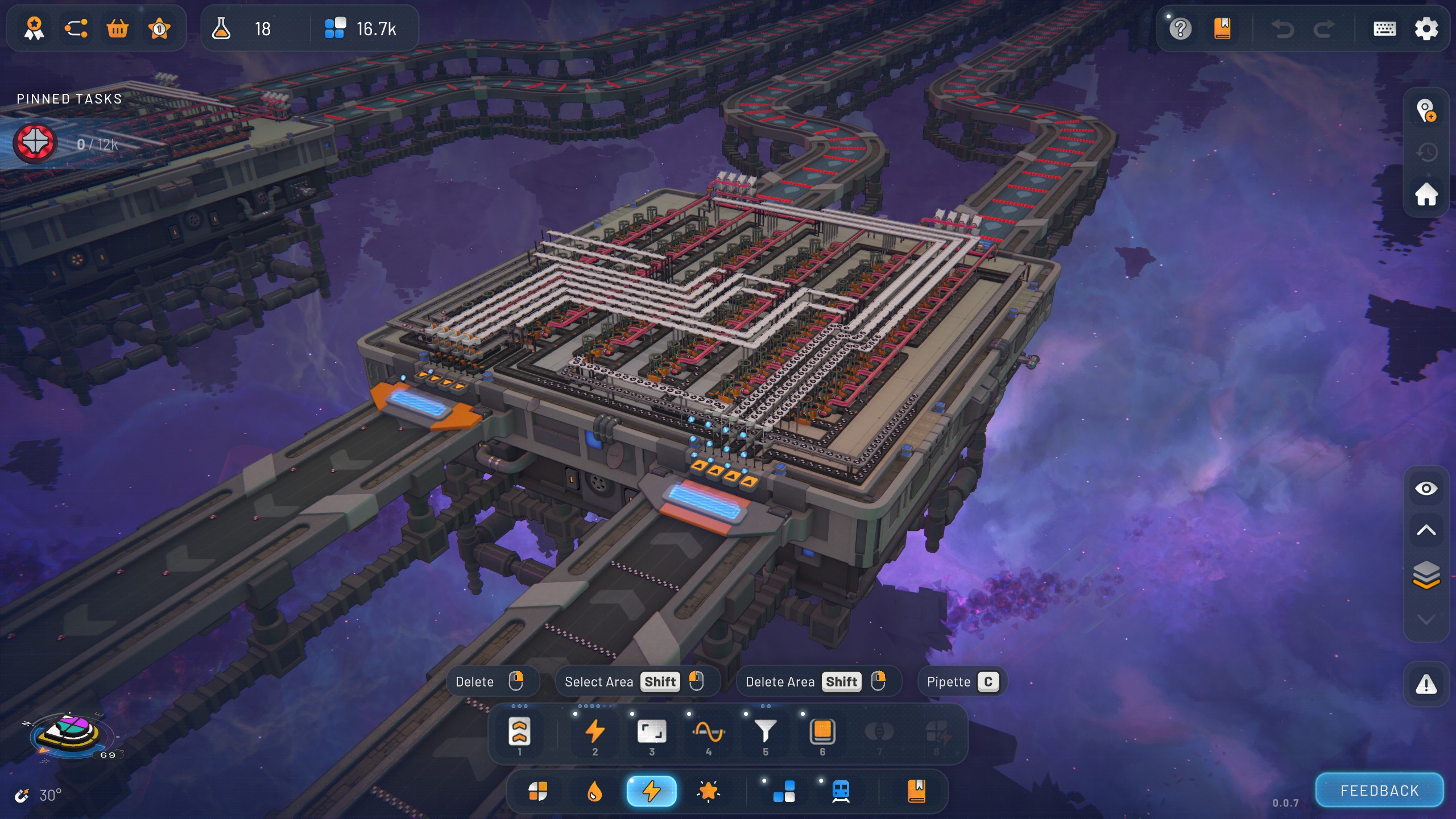
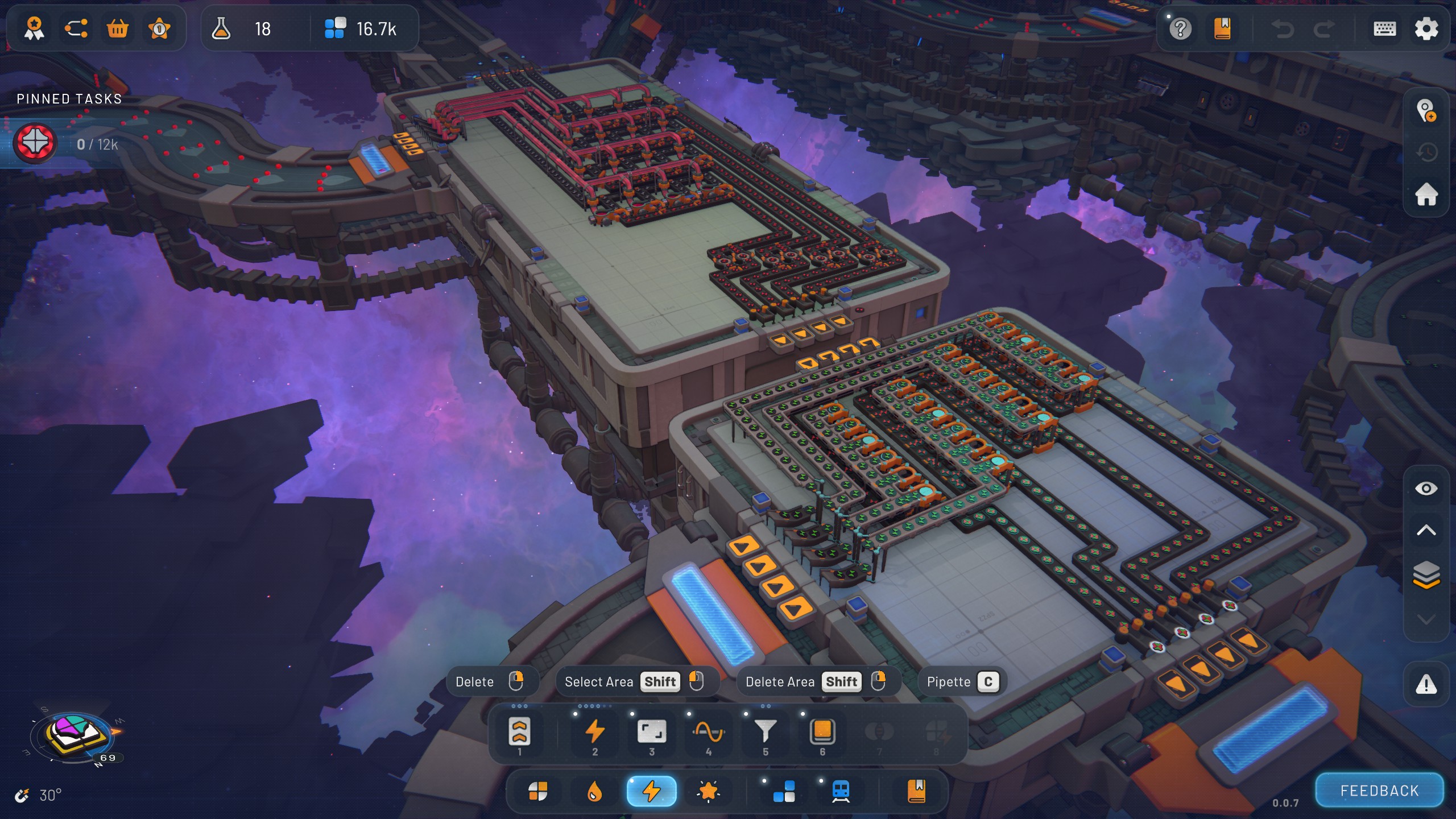
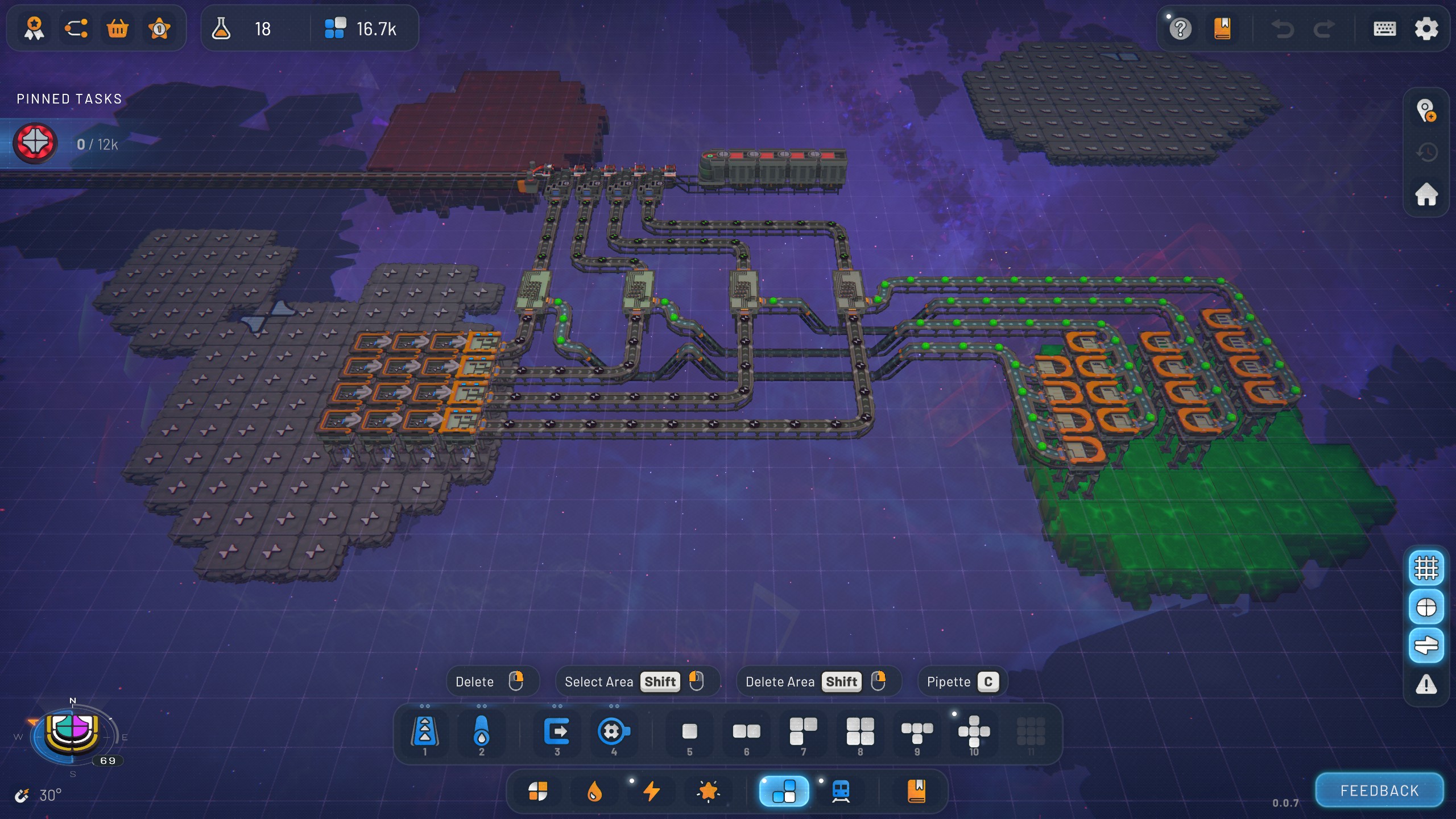
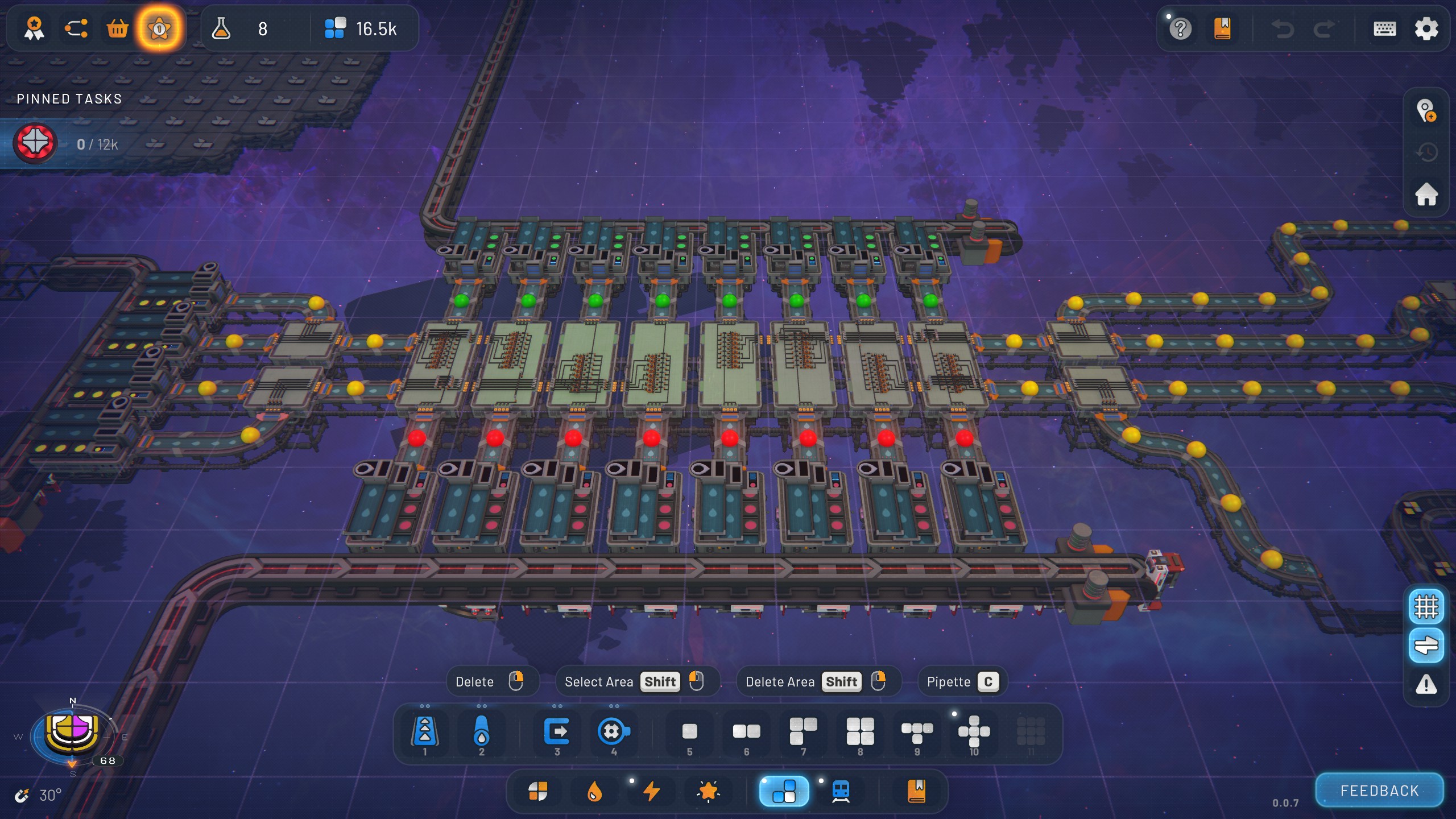
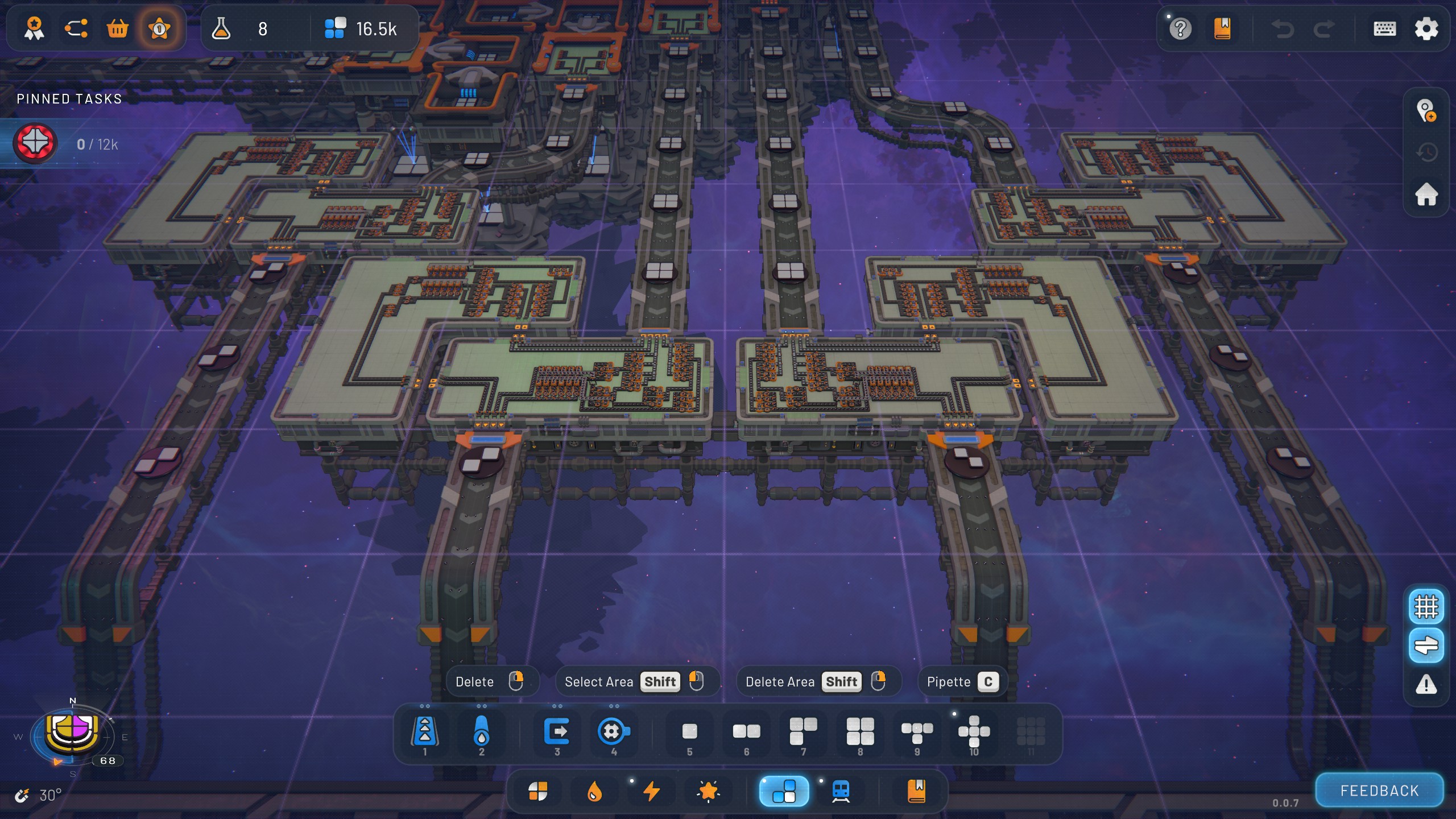
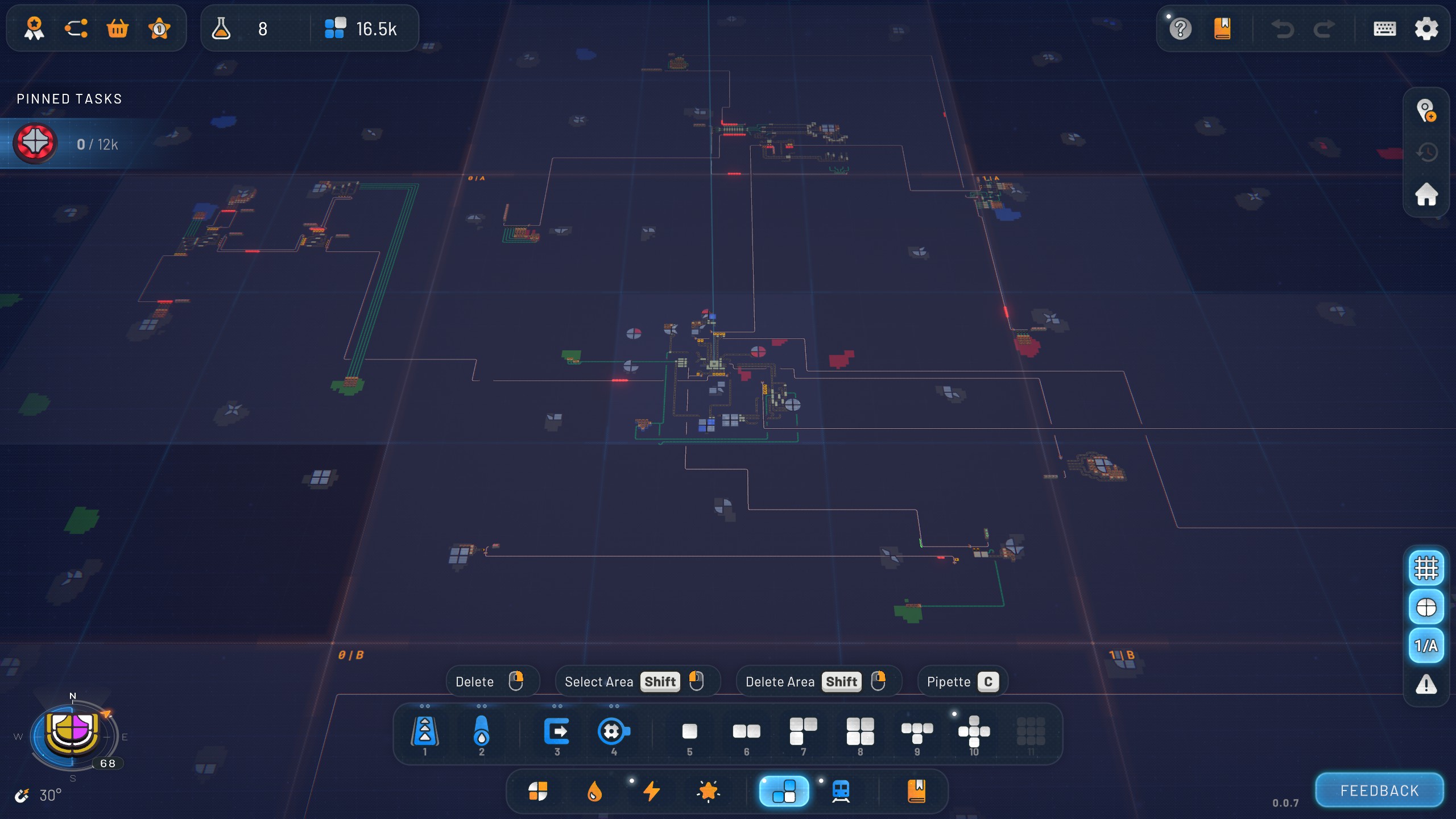
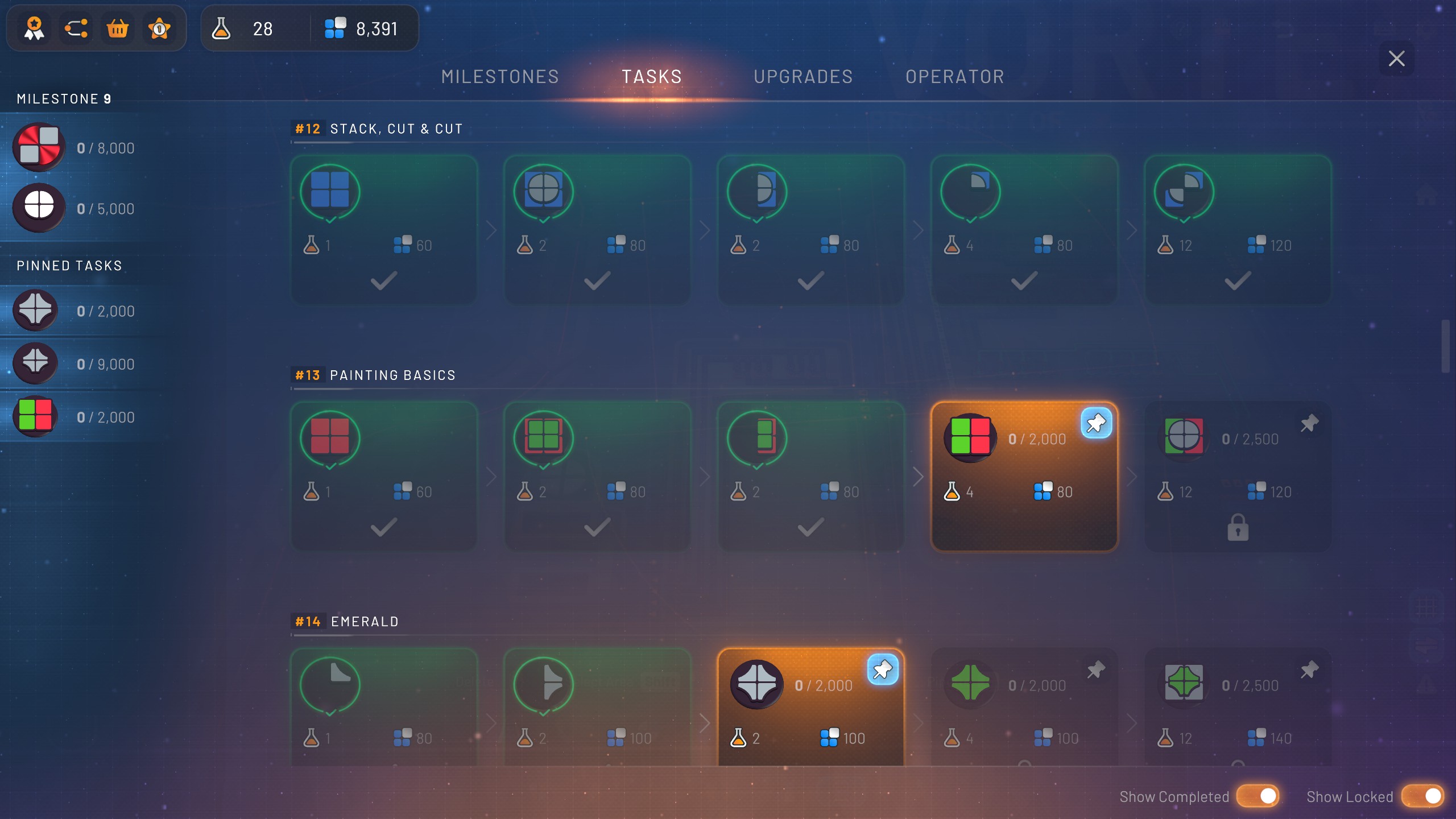
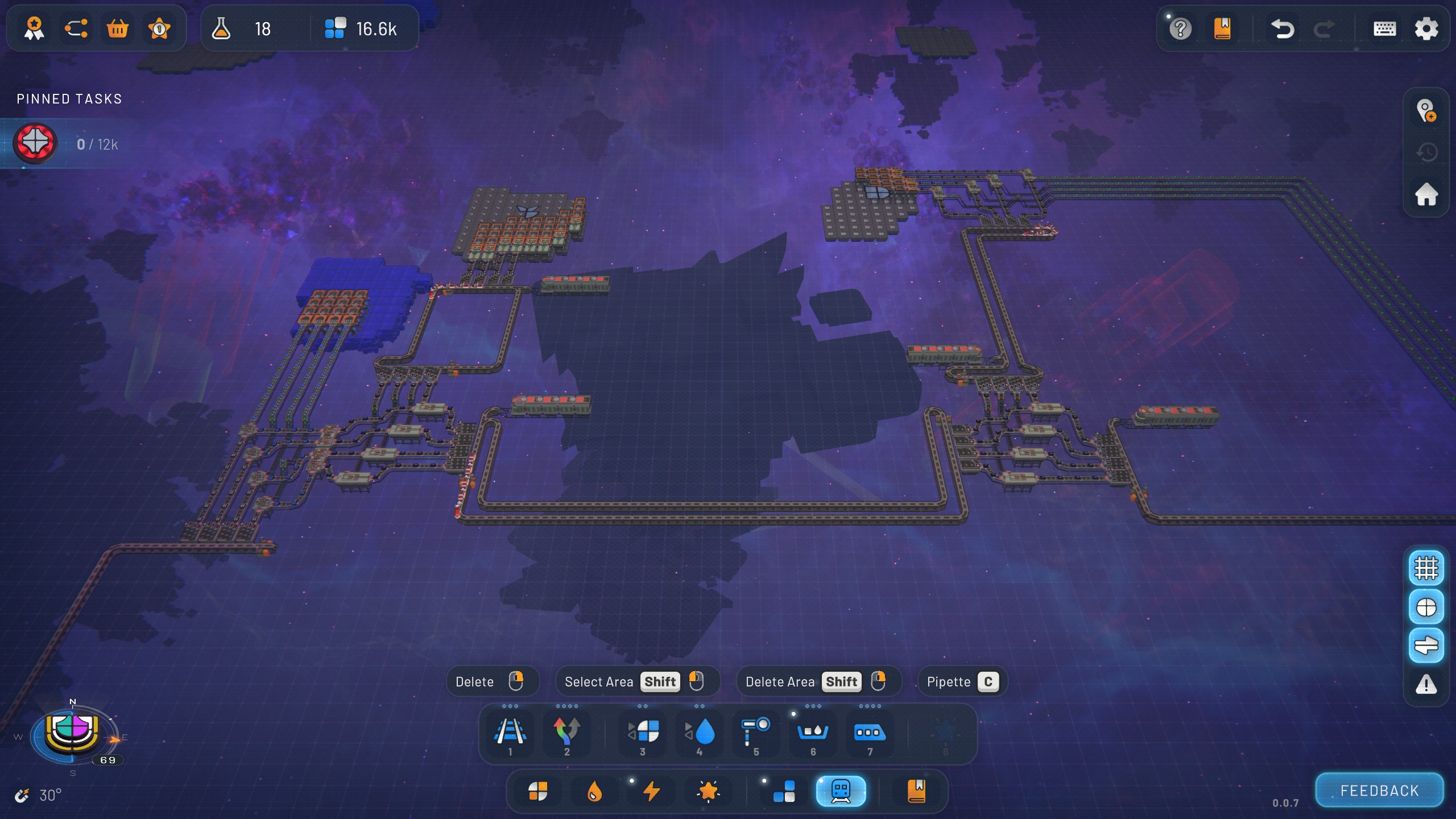
That's mostly familiar for people who played the first Shapez. Shapes 2 adds a third dimension, meaning you can run conveyors and pipes and place machines across three heights above your factory floor. You get to choose which sides of a factory segment—what Shapez calls a space platform—the raw materials go in and products go out, then chain your platforms into a connected series of machines that do specific jobs.
Other factory games have you place machines that make products: Shapez has you design the internals of the machines yourself.
What makes Shapez so cool beyond that is how once you've figured out a process in a way you really like you'll just copy that platform entire and plop it down in the future when you need the same operation done. It emphasizes the thinking and discovery phase of the automation process and cuts down on the amount of time you have to keep reckoning with a problem you've already solved.
The biggest gaming news, reviews and hardware deals
Keep up to date with the most important stories and the best deals, as picked by the PC Gamer team.
You'll then start running big inter-factory-segment belts and train cars with finished products or raw materials to either get them to a next step or toss them into the vortex at the center where you deliver finished orders. There's even a very satisfying upgrade to dunk whole trains of finished goods directly into the vortex.
One of the big pursuits for end-game Factorio players is building a megabase, often to get to some arbitrarily high number. It's a really interesting pursuit as you manage the balance of scale and expansion, but it's tedious at times, which means that only a few really dedicated people with plenty of disposable time can get into it. Shapez 2 on its easiest difficulties distills that megabase-building experience down into something that, while less complex, you can digest in 20-30 hours. You get the enjoyment and excitement of large, independent factory segments that combine products into huge output to reach big goals. Is it a lesser version of the same high? Probably, but you didn't spend 1,000 hours to get there.
Which isn't inherently a bad thing! The reason I say this is such a good year for factory games is because we're getting three wildly different experiences. One, Shapez 2, about the pure logic of building and scaling automated systems. Another, Satisfactory, about being grounded in and wandering a single place that you can twist and change and mold through building larger, better things. The third, Factorio: Space Age, about complex interactions between the pressure of limited resources and the limitations of physics.
Plus, I can draw that clear distinction with Shapez 2 not even in full release. The 30-some hours of fun you can have with it in early access feels like its own entire game, and the developers are clear that they intend multiple major updates adding more features and more stuff to it during the six months, minimum, they want it to stay in early access.
This genre has exploded into life over the past decade, but it's clear to me that 2024 will be remembered as a banner year for factory and automation games because we're finally, properly meeting their true potential.
Jon Bolding is a games writer and critic with an extensive background in strategy games. When he's not on his PC, he can be found playing every tabletop game under the sun.


